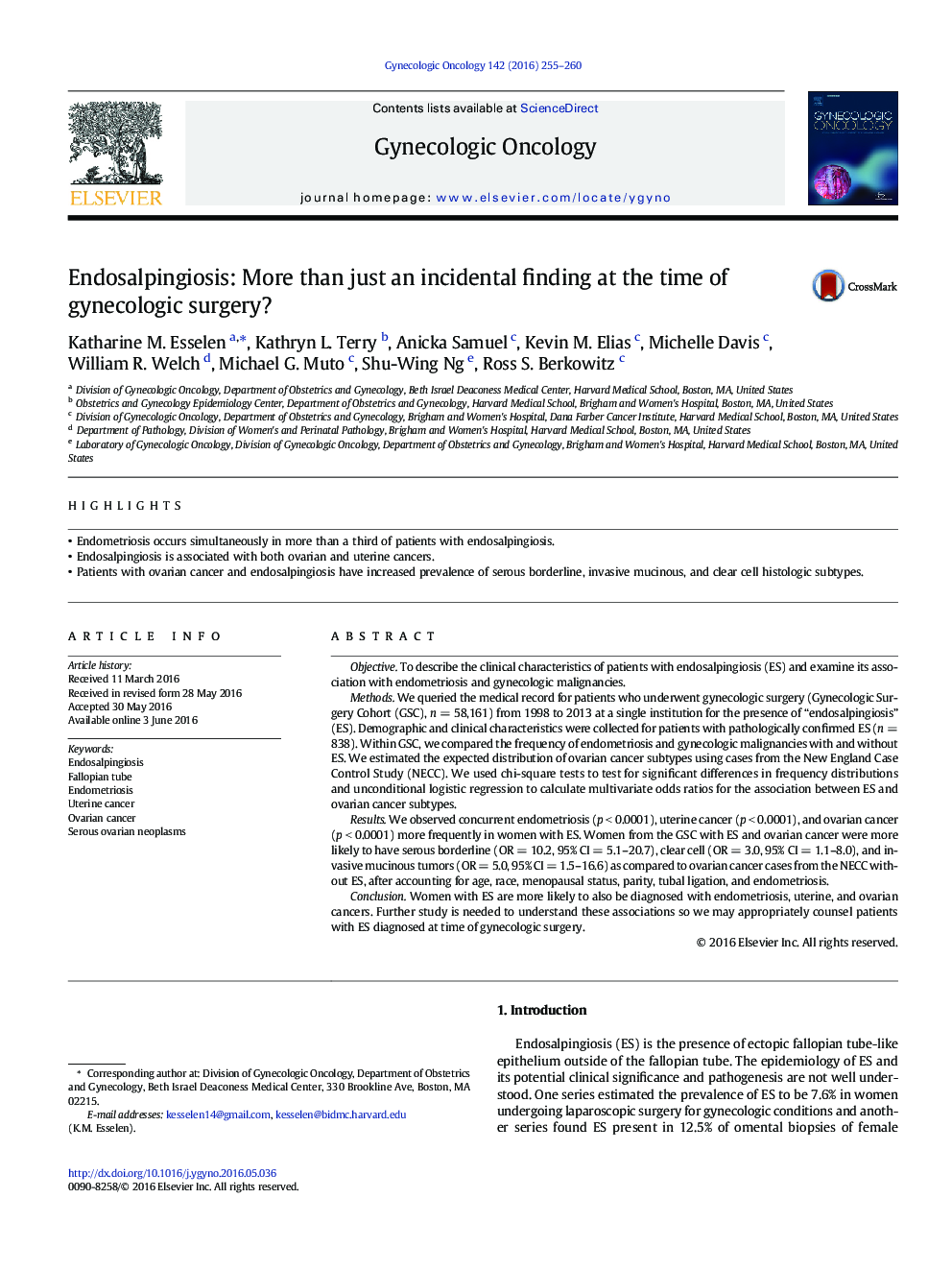| کد مقاله | کد نشریه | سال انتشار | مقاله انگلیسی | نسخه تمام متن |
|---|---|---|---|---|
| 3946351 | 1254336 | 2016 | 6 صفحه PDF | دانلود رایگان |

• Endometriosis occurs simultaneously in more than a third of patients with endosalpingiosis.
• Endosalpingiosis is associated with both ovarian and uterine cancers.
• Patients with ovarian cancer and endosalpingiosis have increased prevalence of serous borderline, invasive mucinous, and clear cell histologic subtypes.
ObjectiveTo describe the clinical characteristics of patients with endosalpingiosis (ES) and examine its association with endometriosis and gynecologic malignancies.MethodsWe queried the medical record for patients who underwent gynecologic surgery (Gynecologic Surgery Cohort (GSC), n = 58,161) from 1998 to 2013 at a single institution for the presence of “endosalpingiosis” (ES). Demographic and clinical characteristics were collected for patients with pathologically confirmed ES (n = 838). Within GSC, we compared the frequency of endometriosis and gynecologic malignancies with and without ES. We estimated the expected distribution of ovarian cancer subtypes using cases from the New England Case Control Study (NECC). We used chi-square tests to test for significant differences in frequency distributions and unconditional logistic regression to calculate multivariate odds ratios for the association between ES and ovarian cancer subtypes.ResultsWe observed concurrent endometriosis (p < 0.0001), uterine cancer (p < 0.0001), and ovarian cancer (p < 0.0001) more frequently in women with ES. Women from the GSC with ES and ovarian cancer were more likely to have serous borderline (OR = 10.2, 95% CI = 5.1–20.7), clear cell (OR = 3.0, 95% CI = 1.1–8.0), and invasive mucinous tumors (OR = 5.0, 95% CI = 1.5–16.6) as compared to ovarian cancer cases from the NECC without ES, after accounting for age, race, menopausal status, parity, tubal ligation, and endometriosis.ConclusionWomen with ES are more likely to also be diagnosed with endometriosis, uterine, and ovarian cancers. Further study is needed to understand these associations so we may appropriately counsel patients with ES diagnosed at time of gynecologic surgery.
Journal: Gynecologic Oncology - Volume 142, Issue 2, August 2016, Pages 255–260